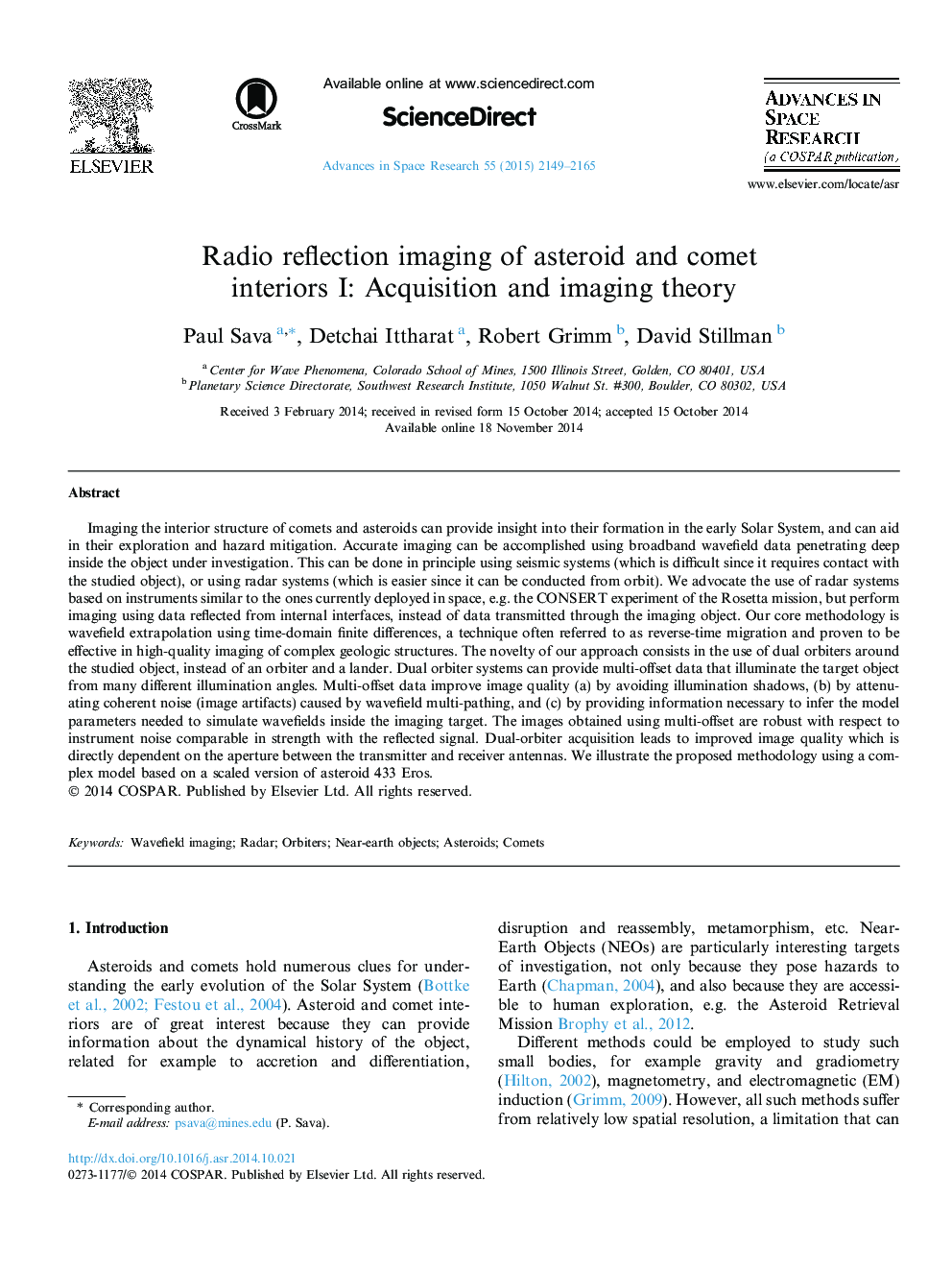| Article ID | Journal | Published Year | Pages | File Type |
|---|---|---|---|---|
| 1763911 | Advances in Space Research | 2015 | 17 Pages |
Imaging the interior structure of comets and asteroids can provide insight into their formation in the early Solar System, and can aid in their exploration and hazard mitigation. Accurate imaging can be accomplished using broadband wavefield data penetrating deep inside the object under investigation. This can be done in principle using seismic systems (which is difficult since it requires contact with the studied object), or using radar systems (which is easier since it can be conducted from orbit). We advocate the use of radar systems based on instruments similar to the ones currently deployed in space, e.g. the CONSERT experiment of the Rosetta mission, but perform imaging using data reflected from internal interfaces, instead of data transmitted through the imaging object. Our core methodology is wavefield extrapolation using time-domain finite differences, a technique often referred to as reverse-time migration and proven to be effective in high-quality imaging of complex geologic structures. The novelty of our approach consists in the use of dual orbiters around the studied object, instead of an orbiter and a lander. Dual orbiter systems can provide multi-offset data that illuminate the target object from many different illumination angles. Multi-offset data improve image quality (a) by avoiding illumination shadows, (b) by attenuating coherent noise (image artifacts) caused by wavefield multi-pathing, and (c) by providing information necessary to infer the model parameters needed to simulate wavefields inside the imaging target. The images obtained using multi-offset are robust with respect to instrument noise comparable in strength with the reflected signal. Dual-orbiter acquisition leads to improved image quality which is directly dependent on the aperture between the transmitter and receiver antennas. We illustrate the proposed methodology using a complex model based on a scaled version of asteroid 433 Eros.
